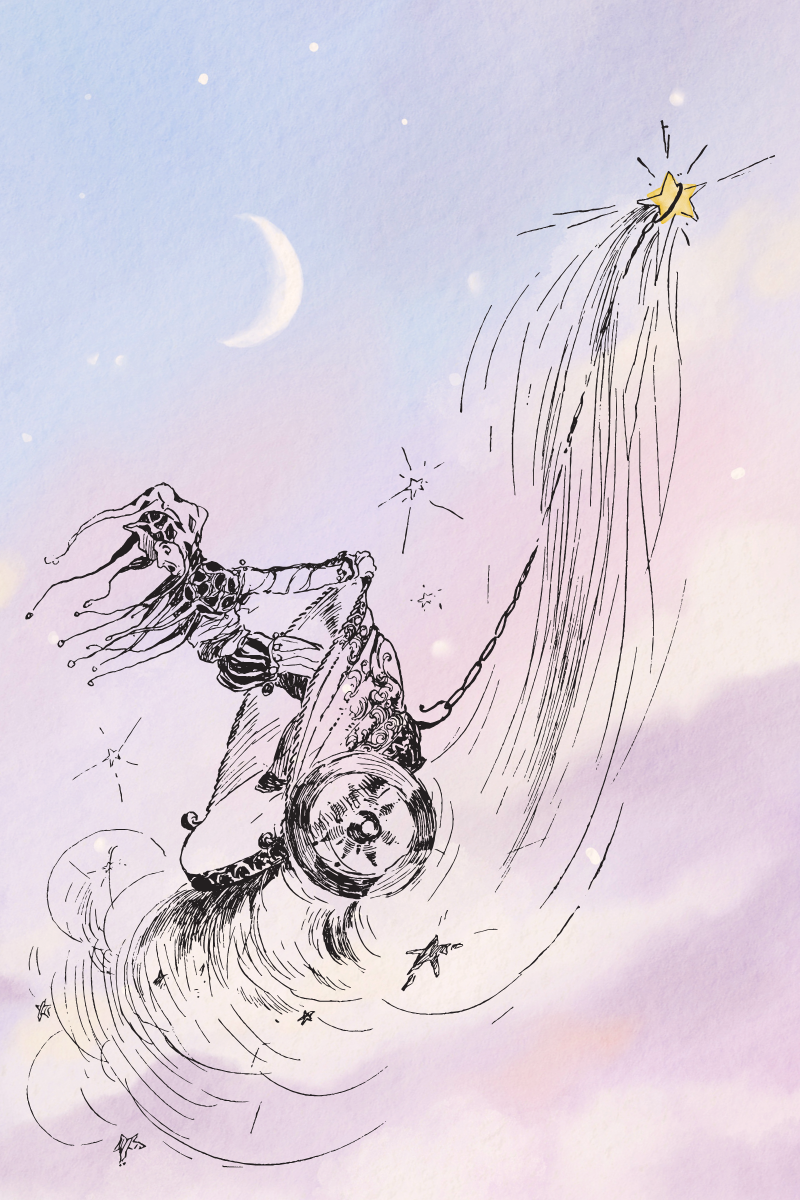I just found this book at my eLibrary, and since I am always looking to expand my knowledge and understanding of Tarot, I decided to check it out. I had to wait a few weeks, as it seems to be a popular read.
Tales Behind Tarot
The book is called The Tales Behind Tarot by Alison Davies. I think the title is a bit misleading as I thought it would be mythologies or pre-existing stories that explained the Tarot's deep symbolism, perhaps like she does in her book Goddess Stories. Or like the mythologies that support the astrological signs and planets, much like the mythic astrology posts Abby shares for her $3 membership level.
Instead, the book uses each Tarot card as a vignette for an ongoing story, The Fool's story in the case of the Major Arcana. Alison is a storyteller by trade, delivering sessions at universities on how stories can be used as tools for teaching and learning.
When I first began reading, I'll admit I was a bit bored, thinking this was going to be rather mundane reading, reiterating what I already knew about Tarot. But, that didn't last long.
Telling a unique story for the Major Arcana and each of the 4 Minor Arcana, Davies weaves a creative web of connected imagery that serves not only as a mnemonic device for remembering the meanings and themes of the Tarot, but as she herself says... offers "a unique insight into each card's meaning" that "will help you connect spiritually and emotionally."
The stories are akin to mythologies of old, layered with the nuances of metaphor that could be applied to many situations. What is represented as a quest for a soulmate in the story of Cups, could easily be applied to the quest for life purpose as well. The magic wand idea presented in the story of Wands could apply to any idea or project you are working on.
Major Arcana
As mentioned above, the Major Arcana is presented as the story of the Fool's Journey. The Fool is the card that is generally assigned the number 0, although sometimes the number XXII (22), indicating the beginning of the journey, or indeed an ending, which is another beginning.
Like all good stories, it begins, "Once upon a time..." Davies does a great job following the fool through all the cards of the Major Arcana. He (or she) is intricately and deeply involved with the scenery presented in each vignette, sometimes as an observer, and others embodying the character represented by the card.
Each vignette begins with a square containing 4 or 5 key words, indicating the themes of the card. Then the story is told in a most fascinating and often surprising way. I love the way Davies captures the finer nuances of each card's meanings. It is obvious that her dedication to and knowledge of her craft run deep, even though the stories are very relatable. Do not let the apparent simplicity of the tales keep you from absorbing the deeper energies of each experiential scene.
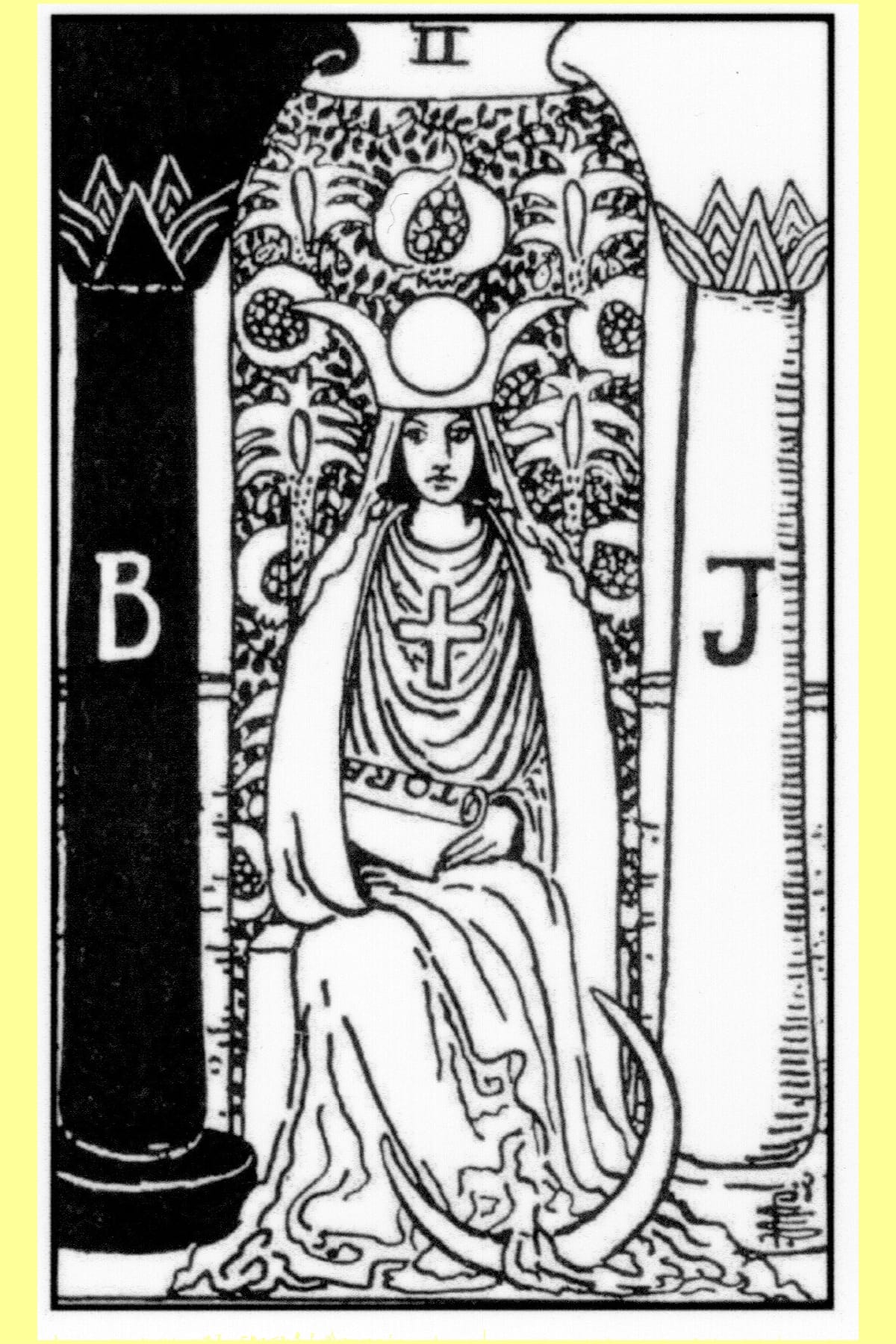
Following the story portion for each card of the Major Arcana, Davies adds in italics a few sentences that concentrate the overall energies of that particular card.
The High Priestess invites you to embrace your feminine power. Trust your intuition and know that you have the answers within.
These summaries are all the more powerful having read her engaging stories.

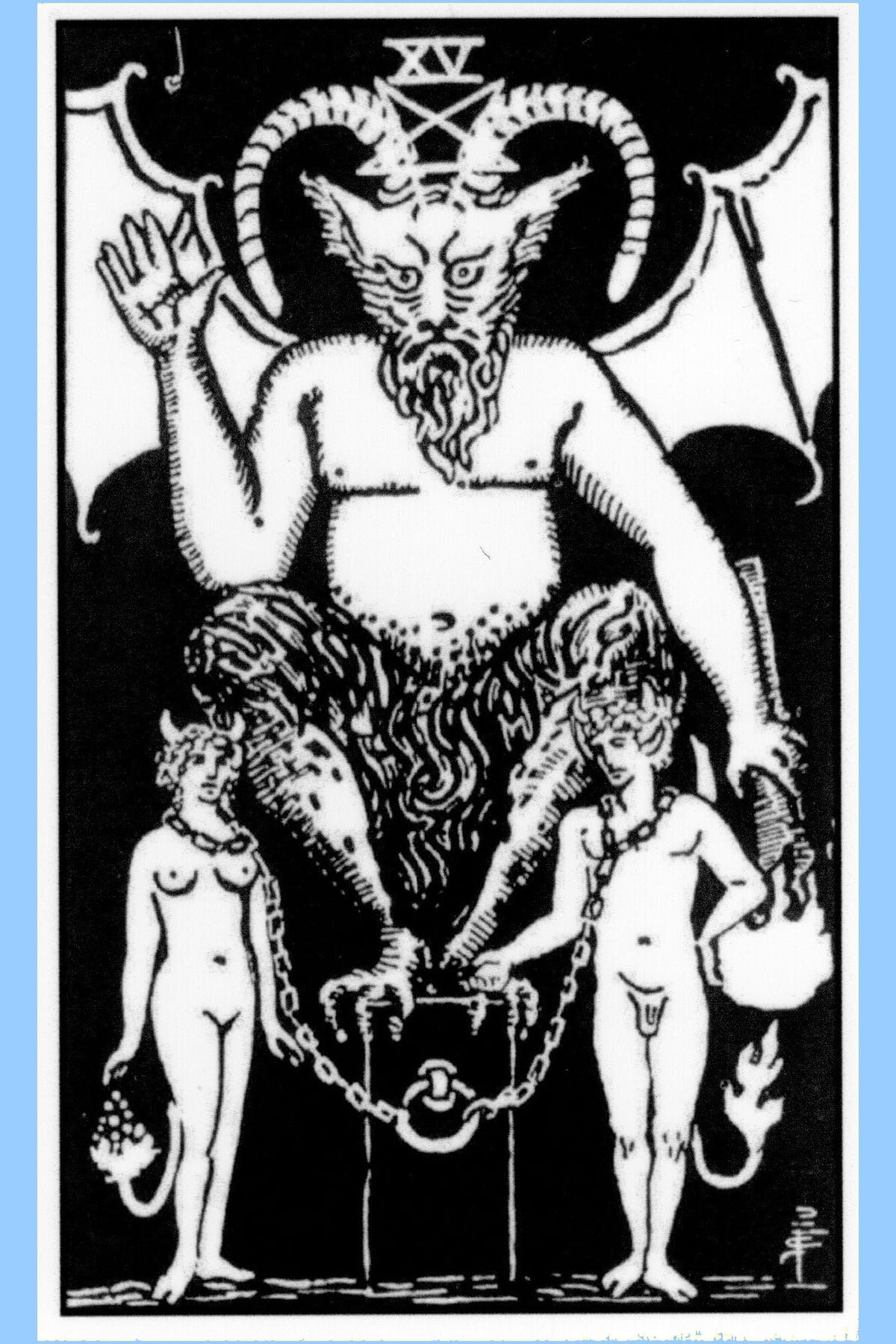
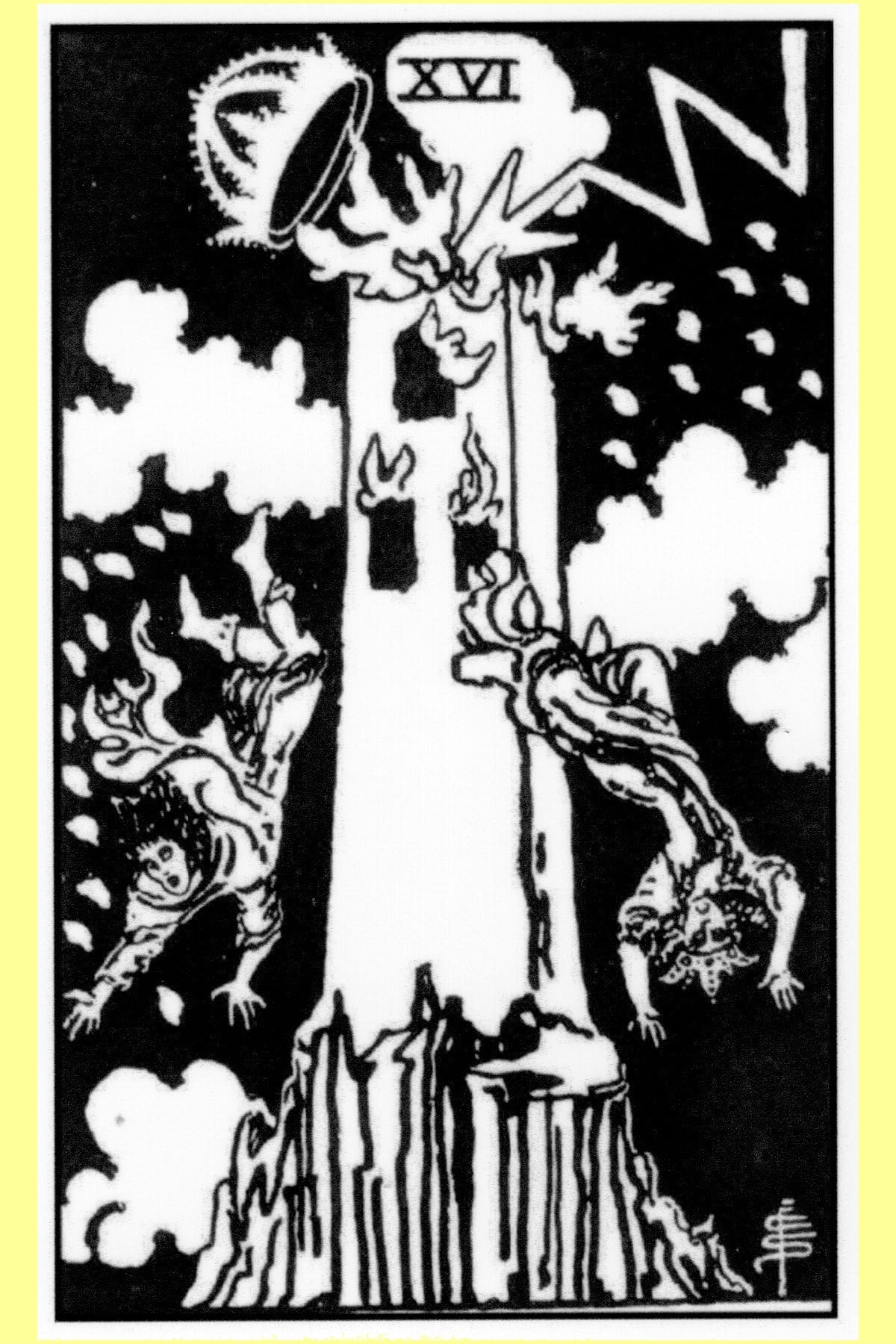
Death, Devil and Tower - Rider Waite Smith
I particularly like the way she addresses some of the cards that traditionally have instilled more fear in people because of popular cookbook interpretations: Death, the Devil, the Tower. Davies doesn't shy away from the need to recognize and address very real challenges in our lives, but always offers perspective and hope.
By the time the Fool reaches the World card, the last of the Major Arcana, he is quite wise, but you might notice that he has not lost his essence, which is the beginner's mind. We would do well to remember that even the wise have been called fools by those without vision.
Pentacles
Here, we begin a new story, focused on three sisters who have found a magic coin. Again, Davies gives us the keywords for the themes of each card and then dives into the scenes of the story based on each card, progressing through the numerical cards and finishing with the court cards.
Davies addresses themes common to money, including feelings of entitlement and unworthiness, blessings and poverty, sharing and hording, and individuality and community. The sisters have some difficult lessons to learn, but by the time we reach the eight of pentacles, their is wisdom evident as illustrated by this quote from the youngest sister Charity...
"Oh, you misunderstand me Sir, we are still wealthy, but the riches we value are a different kind of treasure. This," she said, pointing to the coins, " is a gift that we want everyone to enjoy."
Like many fairy tales, the ending is one of utopian happiness, but the larger message of the complete story, is that we strive for ideals understanding that striving includes struggle, mistakes, lessons, and choice. The story must be seen in its complete context to avoid pie in the sky thinking.
Swords
The story of the Swords begins with a young girl by the name of Scarlett. She is to be plagued and also blessed by the power of thought and ideas throughout the narrative. She was given a dream, but one that seemed impossible given how things were playing out in real life.
Various characters appear to illustrate the themes of the cards, and Davies transitions are very well done. I could imagine watching a movie or tv show, seeing the scenes change before my eyes.
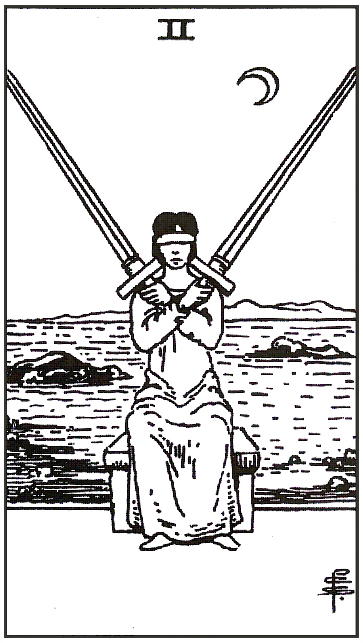
I personally loved the Two of Swords card vignette where the Witch, Scarlett's wise but non-comformist mentor covers her own eyes with a blindfold, knowing "that it was only without sight that she would truly see and make the right decision" regarding a challenge her protege was facing. Davies represents the imagery of the Two of Swords very creatively, but also true to how Pamela Colman Smith artistically illustrated the Rider-Waite-Smith card.
Again, like any good fairy tale, there are heartbreaks and breakthroughs and Alison Davies does not disappoint. The writing is simple. The themes are deep. If you can use your own imagination to build on what the author has presented, you are in for a very rich treat.
Cups
In a very imaginative way, Davies weaves the theme of emotions into a story about broken families and unfulfilled dreams. By the end of the narrative, the characters find lost parts of themselves as they also find long lost family members.
An unnamed man becomes the adoptive father to a baby "left at the water's edge, wrapped in muslin and lace, and nestled upon a lotus leaf." We learn later that he had suffered a loss of love in his life, but he dedicates all of his love and energy to this girl he names Lily.
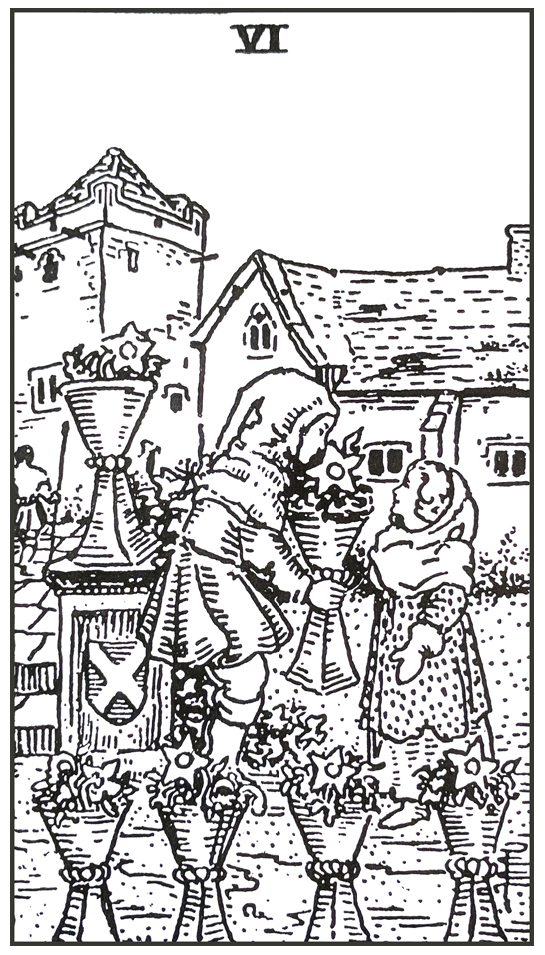
After this father figure passes away, Lily is unconsolable until we reach the Six of Cups where a young boy in the market offers her some flowers in a cup. She refuses, saying she doesn't have the money, but he offers it to her as a gift. She accepts the gifts, expressing her gratitude.
"[She] held the cup close to her chest It warmed her heart and soul, and made her realize that nothing is ever forgotten, or lost."
Lessons and struggles remain both for Lily and a young man whose heart has been captured at the sight of her in the market. Davies continues the story, perhaps to its logical fairytale conclusion but in a very engaging and creative way.
Wands
Wands does not begin with a person but with the personification of an idea.
"Once upon a time, there was an idea, a kernel of a thought that had not yet been conceived. It imagines what it will be like to light someone up from the inside."
The idea gets so carried away that it magically transforms into what else but a wand, "a powerful tool in the right hands and that's when you become aware of it..."
The tale continues when William, a young noble, wakes up with an idea in his head and so begins his quest. There is a hint of both the Hero's Journey and the Prodigal Son in this story.
His quest is virtuous, but as with anything is to be misunderstood, maligned, and even misappropriated by others. Will he remain true to his vision in the face of surmounting difficulties?
Davies represents darkness and devastation as much as she shows dedication and optimism in this tale. This is no Hallmark movie with its surface tension and seemingly trite and simple resolution for a "happily ever after." William battles with forces within himself and outside himself that call on his responsibility to be true to himself, for his own sake and the sake of his community.
Conclusion
It might be easy to discount this book as a series of 5 simple fairy tales, but we would be making the same egregious mistake that we have made with fairy tales since Descartes uttered the words, "I think, therefore I am."
Lastly, the author includes a helpful index at the end of the book so that you can search for topics that are relevant in your life!
This book calls us beyond simple cookbook definitions of the Tarot, and begs our participation. If we can use our imaginations to fully experience these stories, they just might shed light on what we ourselves and those around us are going through.
Ultimately, this is what I love about the book. There is a clarion call to your imagination and mine, to be activated in pursuit of meaning and understanding. If allowed, it will also call forth your own Inner Wisdom in response to your deepest longings.
Available on Amazon (Free for Kindle Unlimited) and elsewhere. (Not an affiliate link)
Runa Heilung is the founder of Old Soul Alchemy. She uses imagery and the imagination in meditative formats for healing, illumination, and transformation.




